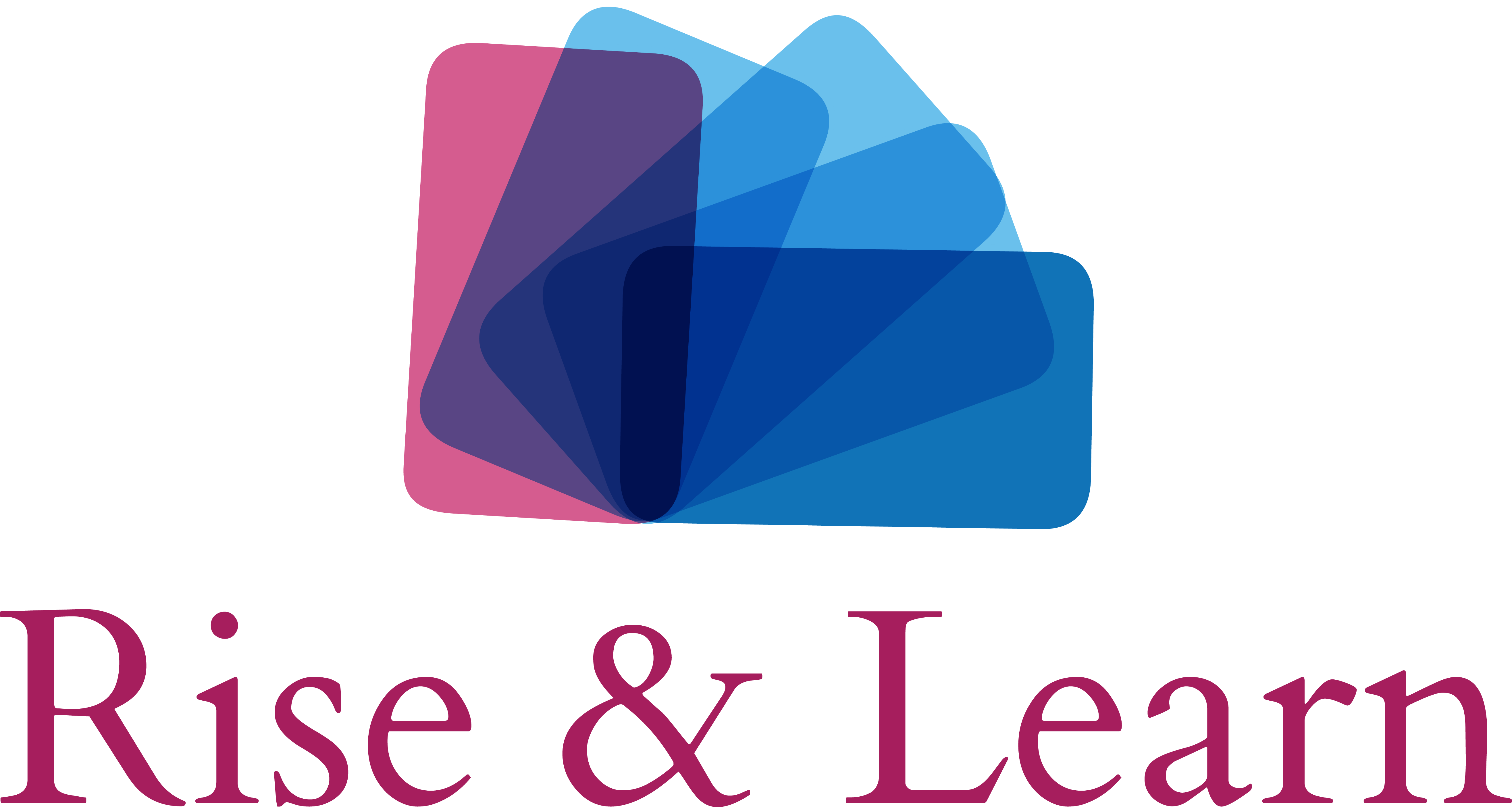Implementing an Automation Software Strategy
Implementing a process automation strategy improves business efficiency. Organizations are increasingly leaning toward business automation strategies to improve efficiency and productivity. For many organizations, it’s either automate or get left behind.
In this course, you’ll learn how digital automation can optimize your organization’s processes, what the capabilities of automation software are, and the key elements of effective automation software. You’ll also learn how to map out a software automation strategy, as well as tips and best practices for creating and implementing an automation strategy.
40 Minutes
- Implementing an Automation Software Strategy
- Recognize the ways in which software automation optimizes business processes
- Identify the capabilities of automated software
- Identify the elements of effective automated software
- Identify the requirements for creating a software automation strategy
- Identify the requirements for implementing a software automation strategy
- Identify best practices for ensuring the successful implementation of an automated software strategy
- Knowledge Check: Software Automation
Exploring Business Process Automation
Business tasks that are monotonous, repetitive, and routine are prone to human error, cause boredom, and erode employee motivation. Business automation can reduce risk and save time, and it offers a wide range of other business benefits, including putting employees to better use working on tasks that require creative, critical, and higher ordered thinking skills.
Implementing business process automation (BPA) can increase productivity, but it’s not suitable for every situation.
In this course, you’ll learn about BPA, including digital automation, how and where to apply it, and the benefits of successful implementation. You’ll also learn how to identify appropriate opportunities, as well as best practices for its use and pitfalls to avoid.
40 Minuets
- Exploring Business Process Automation
- Recognize a description of business process automation
- Recognize the benefits of business process automation
- Distinguish between the types of business process automation
- Identify the best practices for implementing business process automation
- Recognize situations that are suitable for business process automation
- Identify how to avoid common mistakes in rolling out business process automation in an organization
- Knowledge Check: Business Process Automation
Enhancing the Customer Experience with HCI
Human-computer interaction (HCI) deals with how people and automated systems interact and communicate with each other. It’s quickly moving far beyond the field of gaming and entertainment, and into the business environment. In fact, as more devices are connected and automatically carrying out tasks, HCI is being utilized by businesses to add value to their enterprise in many different ways.
In this course, you’ll learn about enhancing the customer experience through HCI and explore possible customer barriers and technical limitations involved. You’ll also learn to recognize best practices for developing HCI applications and identify current HCI trends. This course covers the benefits, challenges, best practices, and trends of HCI.
40 Minutes
- Recognize the ways HCI can enhance the customer experience
- Recognize common customer barriers to HCI
- Recognize some of the technical HCI challenges your organization may face
- Identify best practices for designing and developing HCI applications
- Identify current trends in HCI development and application
- Knowledge Check: Gaining Value with Human-computer Interaction (HCI)
Best Practices for Digital Transformation
Think disruption won’t affect your organization much? Think again. In the modern workplace, disruption caused by digital innovation is a constant threat, and organizations that don’t have an effective change management strategy in place get left behind.
In this course, you’ll learn best practices for managing change in your organization that will enable you to adapt your business operations and increase their resilience and flexibility in the face of change. You’ll also learn about the role of leaders in digital transformation, and the best ways to avoid common digital transformation mistakes.
40 Minutes
- Best Practices for Digital Transformation
- Describe what it means to implement a digital transformation
- Identify key best practices for transforming how an organization operates
- Recognize key best practices for transforming a business model
- Identify key best practices for transforming customer experience
- Describe the role of leadership in digital transformation
- Recognize how to avoid common mistakes in a digital transformation
- Knowledge Check: Implementing Digital Transformation
Rethinking Business Models to Enable Digital Transformation
To keep pace with the swiftly changing digital ecosystem, organizations can’t afford to stand still. It’s vital for a company to continually assess its business model, as part of its digital innovation strategy.
In this course, you’ll explore how business model innovation can benefit your business and help you harvest tomorrow’s opportunities. You’ll also learn the importance of rethinking your business model and the steps to take to assess, innovate, and evolve it. And you’ll learn about emerging new business models and the core competencies needed to compete in digitally transformed markets.
40 Minutes
- Rethinking Business Models to Enable Digital Transformation
- Recognize why it’s important to rethink your business model to ensure an actionable digital transformation
- Identify steps to take when assessing the impact of your organization’s current business model in order to remain competitive in the digital world
- Recognize key characteristics of digital business models
- Recognize actions you can take to evolve your current business model rather than completely changing it
- Recognize how to encourage innovation in a digital business model
- Identify core competencies needed to maintain a competitive advantage in digitally transformed markets
- Knowledge Check: Exploring New Business Models
Harnessing the Benefits of Platform as a Service
Businesses need to be ever on the lookout for ways to give themselves an edge. Platform as a Service (PaaS) and Application Platform as a Service (aPaaS) can reduce costs while increasing your organization’s agility. PaaS is a platform-based service that provides a viable option for reducing costs while at the same time increasing the business’s flexibility and reach.
In this course, you’ll learn about the potential benefits of cloud computing and PaaS for your organization. You’ll also learn about the different deployment options available, where and when PaaS is best utilized, and the current trends in PaaS applications. And you’ll explore best practices for implementing PaaS in your organization.
30 Minutes
- Identify the benefits of PaaS to your organization
- Distinguish between the types of PaaS deployment options
- Recognize effective ways to use PaaS
- Identify situations in which PaaS is not the ideal option
- Recognize current trends in PaaS application
- Knowledge Check: Implementing and Utilizing PaaS
Knowing When to Take Strategic Risks
Risk taking can revolutionize business, but you need to know when and how to take a strategic risk when the opportunity arises. Managing risk means effectively assessing a threat by recognizing the probability of that risk occurring and evaluating the impact of the risk should it occur.
In this course, you’ll learn to define strategic risk taking, what holds individuals back, and how to make calculated leaps of faith.
40 Minutes
- Identify the types of business risk
- Recognize examples of strategies for dealing with risk aversion
- Identify the reasons risk-taking is necessary
- Identify the steps of developing a risk plan
- Recognize best practices to foster strategic risk-taking in an organization
- Knowledge Check: Fostering Strategic Risk-taking Skills
Using Robots and RPA in the Workplace
With current advances in technology, robots are no longer science fiction. They might well be your coworkers! Robots, whether physical or RPA (robotic process automation) software, are fast becoming an integral part of the workplace. Robots and employees need to work well together to succeed.
In this course, you’ll learn about the characteristics of both physical and software robots. You’ll explore how to distinguish between them and how they are being integrated in the workplace. You’ll also learn best practices for implementing and managing robots.
And you’ll learn the considerations for using physical robots and software robots in the workplace and how to optimize the human-robot relationship.
40 Minutes
- Using Robots and RPA in the Workplace
- Identify the characteristics of a robot
- Recognize ways to improve the way employees work with robots
- Identify considerations for using physical robots
- Distinguish between types of physical robots
- Identify the benefits and risks of using software robots
- Identify key best practices for implementing robotic process automation
- Knowledge Check: Robotics
Preparing for the Additive Manufacturing Revolution
Additive manufacturing, also known as 3D printing, is a revolutionary set of manufacturing technologies. Properly understood and applied, it may have significant benefits for companies and their customers. Incorporating additive manufacturing can revolutionize a company’s productivity.
In this course, you’ll learn about the characteristics of additive manufacturing, including the seven main techniques for using it, its advantages, and its associated challenges. You’ll also get an understanding of the common applications and techniques of additive manufacturing. And case studies will illustrate the various benefits it provides.
40 Minutes
- Preparing for the Additive Manufacturing Revolution
- Identify the characteristics of additive manufacturing
- Recognize characteristics of the seven main techniques used in additive manufacturing
- Identify common applications for additive manufacturing
- Recognize the advantages offered by additive manufacturing
- Recognize the challenges that lie ahead for additive manufacturing
- Identify the lessons learned from additive manufacturing case studies
- Knowledge Check: Additive Manufacturing
Transforming the Workplace Using Artificial Intelligence
Artificial Intelligence (AI) is the most important general-purpose technology of the 21st century. Much like electricity at the turn of the 20th century, it has the potential to transform the way businesses and industries operate.
This course will help you grasp AI’s potential so you can transform your business. You’ll learn about AI in business. You’ll examine common cognitive technologies that utilize AI, the effects of its applications in the workplace, and what to consider when identifying AI opportunities and benefits for your business.
You’ll also learn about some of the ethical considerations, challenges, and risks associated with adopting AI.
40 Minutes
- Transforming the Workplace Using Artificial Intelligence
- Recognize common examples of the cognitive technologies of artificial intelligence that are in use in business today
- Identify three main categories of applications of AI that affect the work and workers
- Recognize factors to consider when identifying opportunities for AI in your business
- Identify criteria to use to identify tasks that might benefit from an AI application
- Identify some of the ethical and moral considerations associated with AI today
- Identify the challenges and risks associated with some of the issues facing the adoption of AI as a mainstream technology
- Knowledge Check: AI in the Workplace
Creating Engagement with Virtual Reality
Virtual reality (VR) isn’t new, so why all the attention now? Major strides in artificial intelligence and the 3D environment have brought VR renewed attention.
In this course, you’ll learn about the characteristics of VR and the broad range of uses for VR in the business cyberspace. You’ll explore the factors affecting a VR participant’s sense of presence and how to distinguish between different levels of the immersive environment. Finally, you’ll learn about the equipment typically used for both mobile and high-powered VR experiences.
40 Minutes
- Creating Engagement with Virtual Reality
- Identify characteristics that describe virtual reality
- Identify the business benefits of virtual reality
- Identify key factors that affect a virtual reality participant’s sense of presence
- Distinguish between levels of immersion in virtual reality
- Identify the types of equipment typically used for a mobile virtual reality experience
- Recognize the characteristics of equipment typically used for a high-powered virtual reality experience
- Knowledge Check: Virtual Reality
Getting Started with Machine Learning
Machine learning (ML) is a type of artificial intelligence that’s having a profound impact on computing and its uses. Machine learning in business can provide your organization with a competitive edge, now that the use of analytics has become more prevalent. It has the power to transform the ways businesses operate. But often, organizations aren’t clear how they can leverage it to help achieve their goals.
In this course, you’ll learn what machine learning is, its potential benefits, and associated considerations. You’ll also learn high-level steps your organization can take to identify opportunities for machine learning, determine their feasibility, and implement machine learning solutions.
40 Minutes
- Recognize a description of machine learning
- Recognize the benefits of machine learning
- Identify considerations for using machine learning
- Identify the steps required to identify opportunities for machine learning
- Identify how to determine the feasibility of machine learning opportunities
- Identify the basic steps of the machine learning process
- Knowledge Check: Machine Learning
How Blockchain Technology is Transforming Businesses
Just as the Internet revolutionized the way companies do business, digital innovation and blockchain technology are redefining transactions. In fact, blockchain has the potential to provide its own far-reaching business revolution. Perhaps the best-known application of blockchain is bitcoin. But blockchain is much more than that!
In this course, you’ll learn about cryptograph and blockchain technology, how it changes the way business transactions take place, and the differences between public and private versions. You’ll also learn about smart contracts, and how they enable innovation, as well as the key challenges that blockchain technology currently faces. And you’ll learn about the trust paradigm and how it’s being used in business today.
40 Minutes
- How Blockchain Technology Is Transforming Businesses
- Recognize the key changes blockchain technology introduces to how transactions take place
- Identify statements that describe how blockchain technology works
- Differentiate between public and private blockchains
- Recognize what smart contracts are and how they enable innovative applications of blockchain technology
- Recognize examples of how blockchain technology is being used in business today
- Identify challenges that could impact the rate of widespread adoption of blockchain technology by enterprises
- Knowledge Check: Understanding Blockchain
Connecting with the Internet of Things
The Internet of Things allows objects to be sensed and controlled remotely across an existing network infrastructure. This course will cover the basics of IoT, and its application and value to customers, organizations, and everyday life.
50 Minutes
- Identify the purpose and ideas behind IoT
- Recognize applications of IoT that address key areas of concern
- Identify key data management challenges for IoT
- Select key business areas where IoT can generate value
- Identify approaches to generate revenue from IoT
- Identify ways that IoT benefits customer relationships
- Identify how IoT has changed business
- Expertise Level
Effective Edge Computing
With the use of artificial intelligence and smart devices on the rise, business networks are strained under the heavy load of data. Edge computing seeks to move data processing, collection, and delivery closer to the end user – to the so-called edge of the network.
Edge data and local processing are fast becoming standard features in modern business networks. Edge computing can reduce costs and latency issues, improve data management and data warehousing, and enhance business continuity.
In this course, you’ll learn about the benefits and challenges of edge computing. You’ll also learn how to properly utilize a data warehouse and plan for implementing it into your business operation. And you’ll examine the considerations and best practices for implementing and utilizing edge computing in your organization.
30 Minutes
- Effective Edge Computing
- Identify the key business advantages of using edge computing
- Distinguish between the types of edge computing
- Recognize effective ways to use edge computing for business value
- Recognize key edge computing challenges
- Identify the key components of a comprehensive edge computing strategy for your organization
- Recognize key considerations for reliable and resilient edge computing implementation in your organization
- Knowledge Check: Using Edge Computing for Business Value
Using Augmented Reality for Organizational Gains
When used effectively, virtual reality, or VR, and augmented reality, or AR, can improve your company’s bottom line. In fact, they can transform everything from how an organization trains its workforce to the kind of experience it offers its customers.
In this course, you’ll learn about the characteristics, technical components, and different types of augmented reality. You’ll explore the benefits and best practices for using AR to increase business value and identify key considerations when planning AR implementations. Finally, you’ll learn to recognize current trends in AR that may yield new opportunities for your organization.
30 Minutes
- Using Augmented Reality for Organizational Gains
- Recognize characteristics of augmented reality
- Recognize the technical components of augmented reality
- Identify the different types of augmented reality
- Recognize best practices for using augmented reality to increase business value
- Identify some key areas to consider when beginning to plan for AR implementation
- Recognize current augmented reality trends
- Knowledge Check: Using AR for Increased Value
Applying Virtual Assistant Technology
The virtual assistant and personal digital assistant are recent technologies that enable artificial intelligence to assist your workforce. However, many companies have yet to realize the full potential this technology has for improving growth and competitive advantage.
Virtual assistant technology can help position your organization for smart growth and future-proofing strategies that will allow it to flourish in the digital marketplace.
This course covers benefits, best practice, and trends in virtual assistant technology.
40 Minutes
- Applying Virtual Assistant Technology
- Recognize some of the benefits of using virtual assistant technology in your organization
- Recognize examples of ways VA technology can enhance the overall business experience
- Recognize best practices when implementing and deploying virtual assistant technology in your organization
- Recognize some common challenges when introducing virtual assistant technology and ways to overcome them
- Recognize current and future trends in virtual assistant technology
- Knowledge Check: Understanding Virtual Assistant Technology








